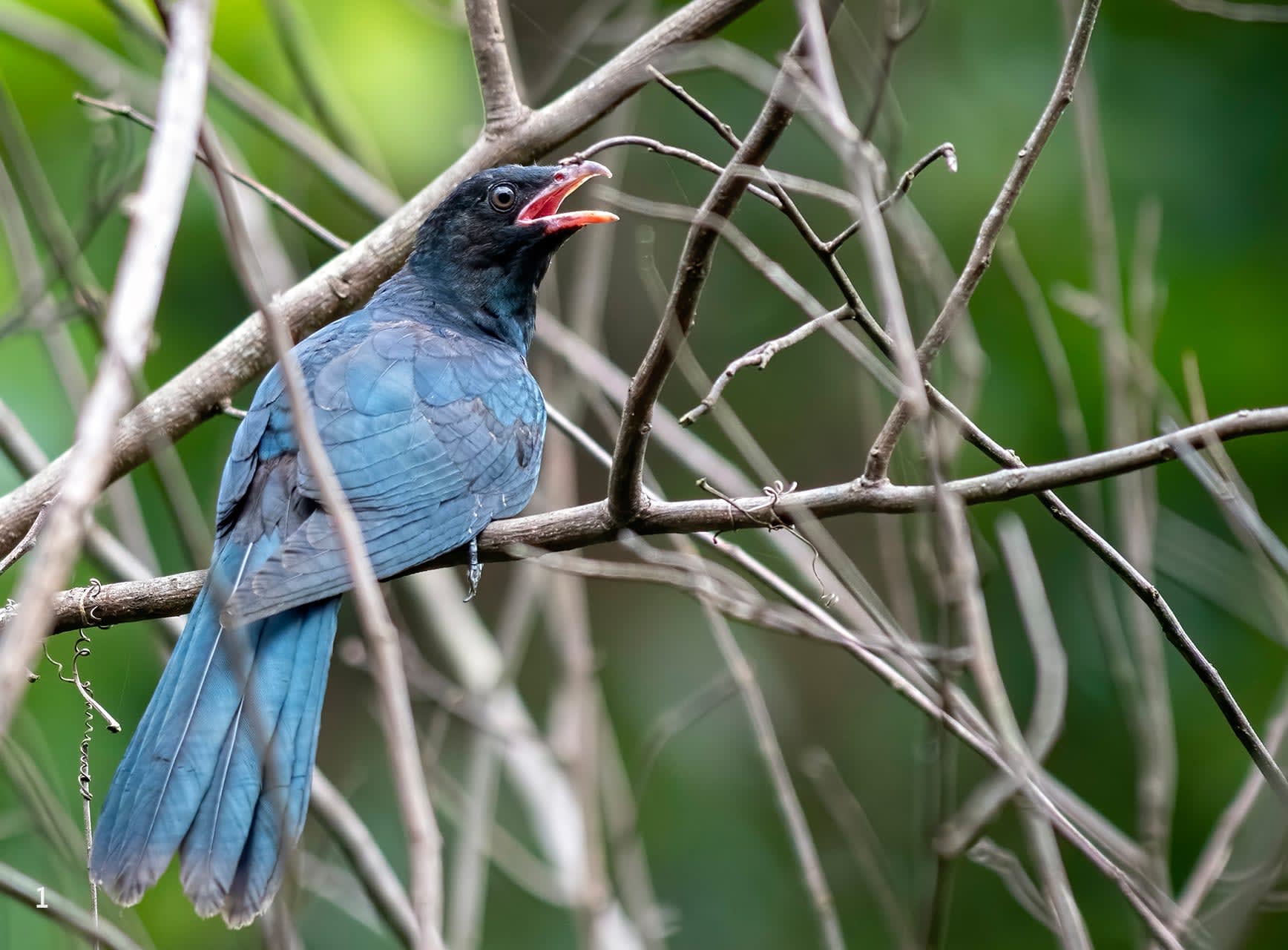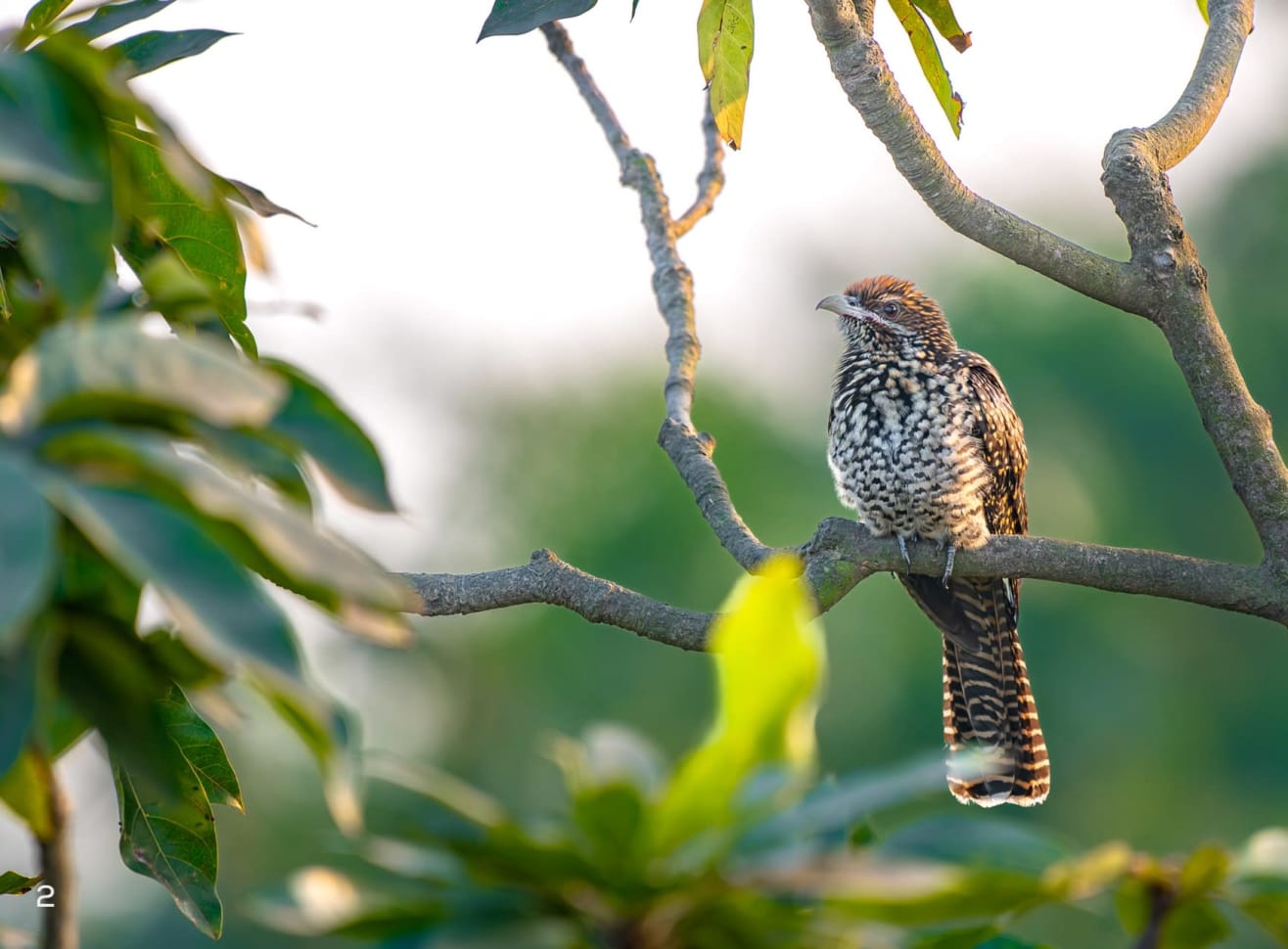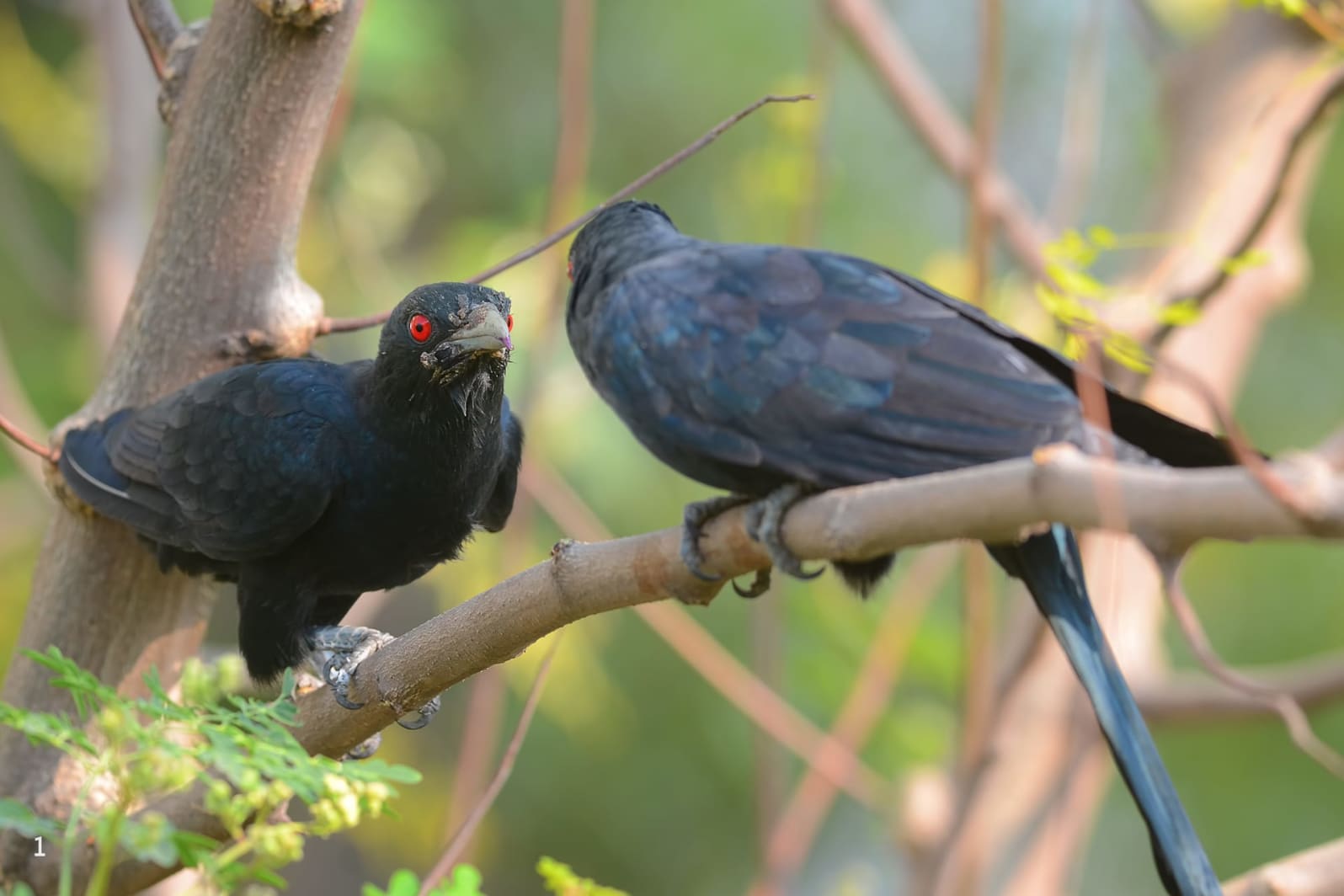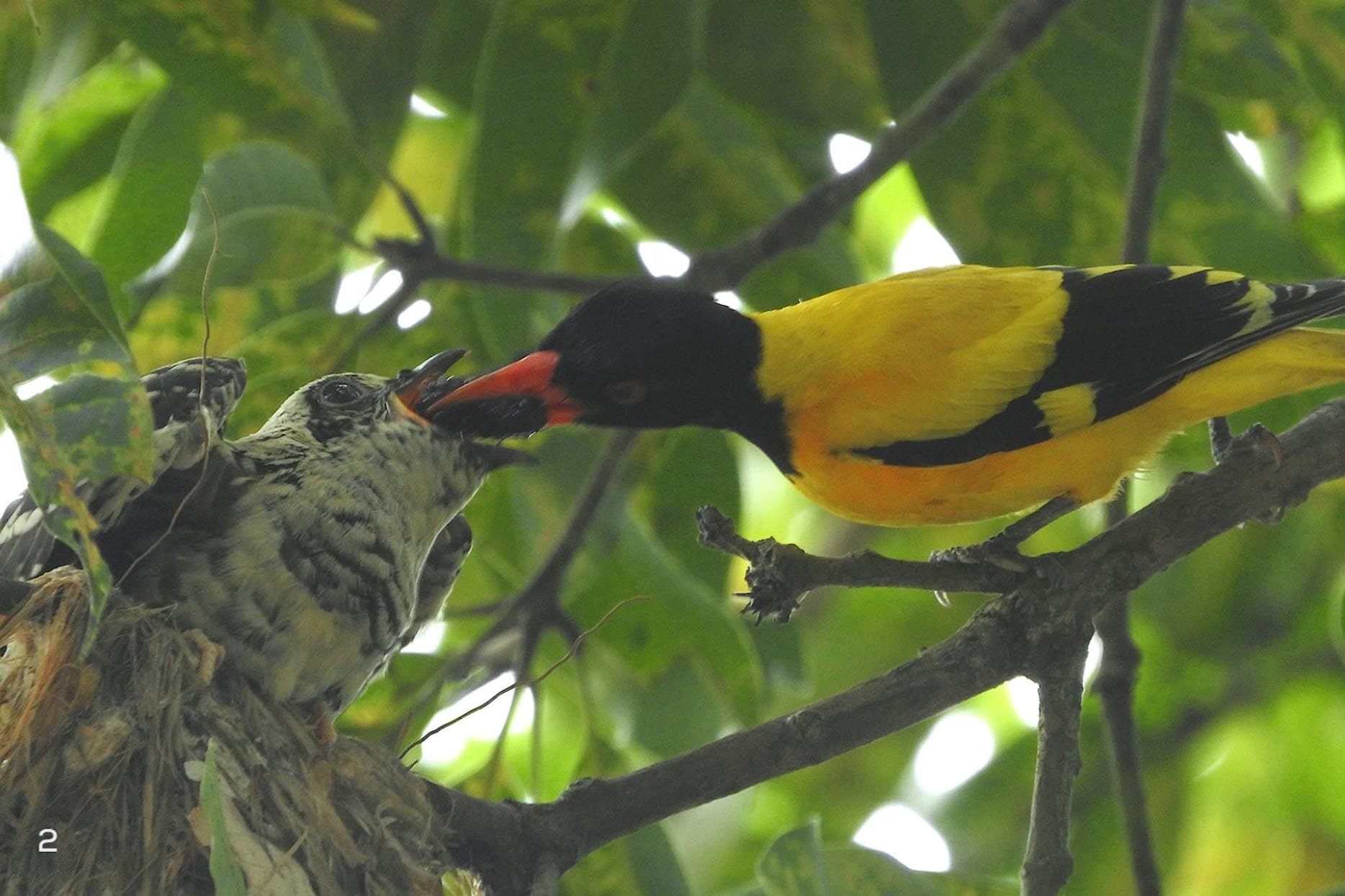 Listen to this article
•
15:34 min
Listen to this article
•
15:34 min
The koel has been calling day and night for most of the summer months. In the daytime, amidst the din of the city, you might miss their song, but on quiet mornings or late in the evening, their call is like a soft whistle heard from a distance. I am sometimes taken by surprise at how the call seems to be coming from a perch close by without any visible signs of the bird. You might not see the bird often, but you will certainly hear it calling koo-oo, koo-oo.
The Asian koel (Eudynamys scolopaceus), a member of the cuckoo family, is found almost all across India. Like other species of this family, the Asian koel also exhibits sexual dimorphism, a term used to describe the difference in appearance of the male and female of a particular species. The male koel is a glossy blue-black with a pale bill, while the female has brown, speckled upperparts and barred creamy-white underparts. What’s common to both the male and female is their long tail and striking, crimson-coloured eyes.
From my apartment in Kanpur, I have a front-row seat to the shenanigans of birds cavorting noiselessly (or noisily, depending on the bird) in the upper reaches of a semal tree. I’ve seen black kites, barbets, peafowl, crows, warblers, mynas, and numerous other birds that make up the city’s winged inhabitants. But I have not spotted koels there yet, though I hear them all the time. Koels are shy birds that like to perch in the dense foliage of trees. Your best bet of spotting them is when they dash from one hideout to another, often calling on the wing.

Cover photo: The Asian koel is a secretive bird that hides and lives in dense trees in a range of habitats from forests and fields to urban areas. Photo: Abhishek Das
One morning, though, I did spot about 3-4 female koels together. Actually, I heard them before I saw them, a loud screeching that jolted me awake early in the morning. In a tree, I saw the female koels in a standoff with a few raucous crows. Both screamed bloody murder at each other for a few minutes, and then everyone went their own way. It’s hard to ascertain the reason for their brawl, but one likely explanation could be that the crows caught the koels red-handed.
You see, the Asian koel is a brood parasite. Much like the other cuckoos, the koel doesn’t build a nest. Instead, the female lays its egg in the nests of other birds, most often the crow. The koel’s egg, a greyish-blue colour with brown speckles on it, closely resembles those of the crow, so it’s understandable that the crow, renowned for its cleverness, rears the koel’s egg as its own. Once the eggs hatch, it has been observed that the koel’s young will often push the crow’s little ones out of the nest to ensure its own survival. While the young of this species are omnivores, adult koels prefer fruits and are most often spotted in fruiting trees.
Sweet as the male koel’s song may be, it can be “too much of a good thing”. The State of India’s Birds report from 2023 mentions that “compared with the pre-2000 baseline, Asian koels have shown a rapid increase in abundance of around 75 per cent, with an annual current increase of 2.7 per cent per year”. Across the internet on public forums, people have been raging about the persistent and annoying call of koels. There are Reddit threads with people venting their frustration with the lovesick bird’s call, and in fact, if you Google “the most annoying bird call”, most of the results are sadly for the koel!
Nevertheless, in India, artists, poets, birdwatchers and researchers have had a long and ongoing fascination for the bird. Imagery of the koel is woven into art, music, and poetry across cultures in the country. Spring is synonymous with the koel’s song, and Rabindranath Tagore, in his poem Plain Speaking, wrote, “The forest blooms with the coming of Spring, All that the koel does is sing”. The koel’s song is also tied with feelings of love and longing and has been variously described as a “slow, tremulous wooing” (A Love Song from the North, by Sarojini Naidu), as “a sleepless plaint” (Abhisara The Tryst, by Rabindranath Tagore) and as “high-pitched strains” (Koel, by Puran Singh). Since the active months of the koel coincide with the mango season on the Indian subcontinent, the two have become inextricably linked. In his famous poem Rtusamhara, Kalidasa wrote, “Drunk on the honey of mango blossoms, the koel rapturously kisses his mate”.
For the British in India, the subcontinent’s flora and fauna were a marvel, very different from their home country. From the 17th to the 19th centuries, many Britishers in India commissioned artwork depicting birds, mammals and plants of the country. The famous Impey album, a collection of Company-style paintings commissioned between 1777 and 1783 by Mary Reade, the wife of the then Chief Justice of the Supreme Court, Elijah Impey, features a male koel perched on a fruit-laden branch. Another painting from the 18th century by Pieter Cornelius de Bevere, a surveyor in the Dutch East India Company stationed in Ceylon (now Sri Lanka), depicts a female koel perched on a branch with yellow blooms.
While researching this article, I came across one of the issues of the Newsletter for Birdwatchers from 1979, in which it was announced that Madhav Gadgil, the renowned Indian ecologist, has instituted a prize — the Madhav Gadgil Prize — for population studies of koels. The announcement read:
“The song of the male Koel is one of the most noticeable of bird songs in our country and must serve as a good indicator of its breeding season. I suggest that we mobilise all the readers of the Newsletter to keep as accurate a record of the song of the male koel this year as possible. The readers could decide to record the total number of breeding calls of male koels one hour after sunrise throughout its breeding season. The number of calls would be small at the beginning, reach a peak at the peak of the breeding season, and then decline.”
I scoured the following issues of the newsletter to determine the result of the study and who won the prize but found no mention of it. Not one to give up easily, I emailed Gadgil to find out. I wasn’t expecting much from this pursuit, but within a few hours, I received a response from him. Sadly, he said, no one had submitted any entries, and hence, no one had won the prize.
This made me think — wouldn’t it be nice to do this study now? Birdwatching is so much about chasing “lifers” and ticking off the new birds you spot, but I think there is just as much pleasure and joy in observing and getting intimately acquainted with everyday birds. Maybe everyone who is reading this could join me in observing koels. There’s no prize to be won, but maybe watching and learning more about them will be prize enough.









